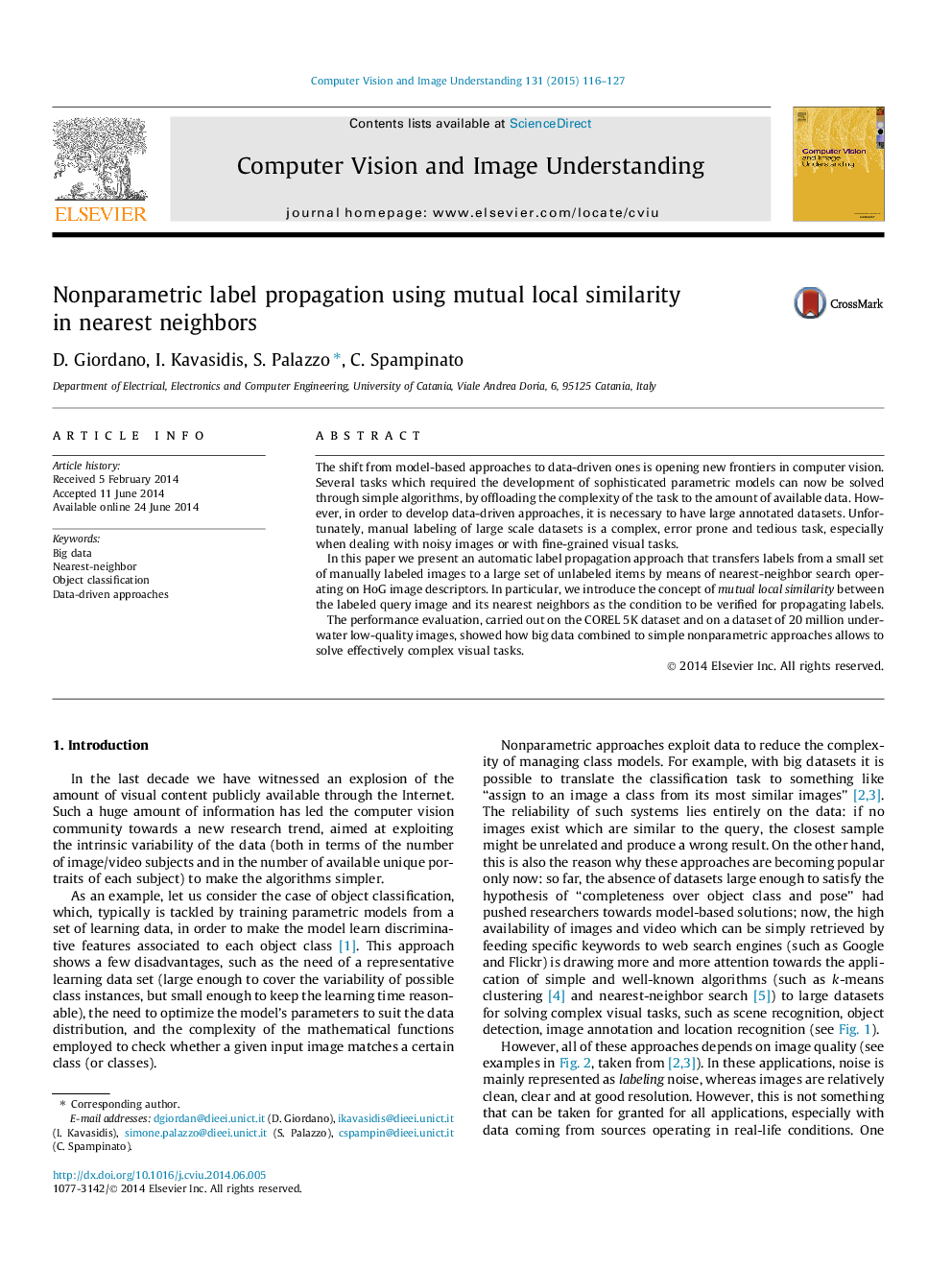| Article ID | Journal | Published Year | Pages | File Type |
|---|---|---|---|---|
| 527543 | Computer Vision and Image Understanding | 2015 | 12 Pages |
•Label propagation by means of nearest-neighbor search and “mutual local similarity”.•Effectiveness and efficiency of quantized HoG for large scale image retrieval.•Example application to low-quality underwater images and fish classification.
The shift from model-based approaches to data-driven ones is opening new frontiers in computer vision. Several tasks which required the development of sophisticated parametric models can now be solved through simple algorithms, by offloading the complexity of the task to the amount of available data. However, in order to develop data-driven approaches, it is necessary to have large annotated datasets. Unfortunately, manual labeling of large scale datasets is a complex, error prone and tedious task, especially when dealing with noisy images or with fine-grained visual tasks.In this paper we present an automatic label propagation approach that transfers labels from a small set of manually labeled images to a large set of unlabeled items by means of nearest-neighbor search operating on HoG image descriptors. In particular, we introduce the concept of mutual local similarity between the labeled query image and its nearest neighbors as the condition to be verified for propagating labels.The performance evaluation, carried out on the COREL 5K dataset and on a dataset of 20 million underwater low-quality images, showed how big data combined to simple nonparametric approaches allows to solve effectively complex visual tasks.
